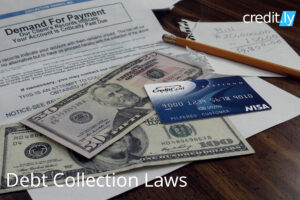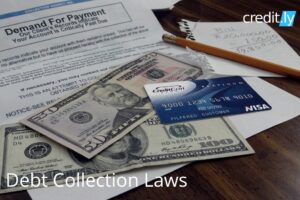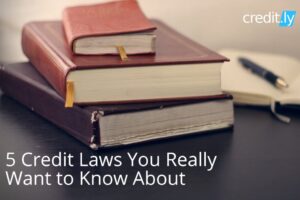[et_pb_section fb_built=”1″ _builder_version=”3.22.3″][et_pb_row _builder_version=”3.25″ background_size=”initial” background_position=”top_left” background_repeat=”repeat”][et_pb_column type=”4_4″ _builder_version=”3.0.47″ custom_padding=”|||” custom_padding__hover=”|||”][et_pb_post_title _builder_version=”3.26.6″ title_font=”|700|||||||” title_line_height=”2em” z_index_tablet=”500″ title_text_shadow_horizontal_length_tablet=”0px” title_text_shadow_vertical_length_tablet=”0px” title_text_shadow_blur_strength_tablet=”1px” meta_text_shadow_horizontal_length_tablet=”0px” meta_text_shadow_vertical_length_tablet=”0px” meta_text_shadow_blur_strength_tablet=”1px” box_shadow_horizontal_tablet=”0px” box_shadow_vertical_tablet=”0px” box_shadow_blur_tablet=”40px” box_shadow_spread_tablet=”0px” text_shadow_horizontal_length_tablet=”0px” text_shadow_vertical_length_tablet=”0px” text_shadow_blur_strength_tablet=”1px”][/et_pb_post_title][et_pb_text _builder_version=”3.29.3″ z_index_tablet=”500″ text_text_shadow_horizontal_length_tablet=”0px” text_text_shadow_vertical_length_tablet=”0px” text_text_shadow_blur_strength_tablet=”1px” link_text_shadow_horizontal_length_tablet=”0px” link_text_shadow_vertical_length_tablet=”0px” link_text_shadow_blur_strength_tablet=”1px” ul_text_shadow_horizontal_length_tablet=”0px” ul_text_shadow_vertical_length_tablet=”0px” ul_text_shadow_blur_strength_tablet=”1px” ol_text_shadow_horizontal_length_tablet=”0px” ol_text_shadow_vertical_length_tablet=”0px” ol_text_shadow_blur_strength_tablet=”1px” quote_text_shadow_horizontal_length_tablet=”0px” quote_text_shadow_vertical_length_tablet=”0px” quote_text_shadow_blur_strength_tablet=”1px” header_text_shadow_horizontal_length_tablet=”0px” header_text_shadow_vertical_length_tablet=”0px” header_text_shadow_blur_strength_tablet=”1px” header_2_text_shadow_horizontal_length_tablet=”0px” header_2_text_shadow_vertical_length_tablet=”0px” header_2_text_shadow_blur_strength_tablet=”1px” header_3_text_shadow_horizontal_length_tablet=”0px” header_3_text_shadow_vertical_length_tablet=”0px” header_3_text_shadow_blur_strength_tablet=”1px” header_4_text_shadow_horizontal_length_tablet=”0px” header_4_text_shadow_vertical_length_tablet=”0px” header_4_text_shadow_blur_strength_tablet=”1px” header_5_text_shadow_horizontal_length_tablet=”0px” header_5_text_shadow_vertical_length_tablet=”0px” header_5_text_shadow_blur_strength_tablet=”1px” header_6_text_shadow_horizontal_length_tablet=”0px” header_6_text_shadow_vertical_length_tablet=”0px” header_6_text_shadow_blur_strength_tablet=”1px” box_shadow_horizontal_tablet=”0px” box_shadow_vertical_tablet=”0px” box_shadow_blur_tablet=”40px” box_shadow_spread_tablet=”0px”]
To get out of debt, you need a plan. To help, the Credit.ly team shares these 8 ways you can approach how to pay off debt and leave some, if not all, of your financial burden behind:
1. Gather your data—bills, credit reports, credit Score, etc.
2. Make a list of your debts and income
3. Lower your interest rates
4. Pay more than you have to pay
5. Earn more money
6. Spend less money
7. Create a budget and debt pay-off plan stick to them
8. Rinse and repeat
Keep this checklist where you can see—like your refrigerator door or your vision board, if you have one, and make it a goal to check a task off the list regularly. More frequently if you want to lower your debt load more quickly.
1. Gather Your Data
Start by knowing where you stand. You want to have a complete picture. Here’s what you need to get:
- Your most recent bill statements for all credit cards and loans, including student loans.
- And your credit reports, so you can check for accuracy and identify all recorded debts.
- Also your credit score to find out whether you’re eligible to lower your interest rates or for a debt consolidation loan.
2. Make a List of Your Debts and Income
Once you have your data in hand, make a list of all your debts, being sure to include:
- Creditor’s name
- Balance
- Minimum monthly payment
- Interest rate
Next, list how much you need to pay in order to zero-out the debt’s balance within three years or whatever your target time-frame is. Remember to include items not listed on your credit reports, such as family loans, medical bills and recurring bills, such as groceries and utilities.
And know your monthly take-home pay. This is the baseline you have to work with toward paying down those debts and buying groceries and such. The amount will also give you insight as to whether you need to take advantage of Ways 4 and 5 below—or how much you need to consider ways 4 and 5.
3. Lower Your Interest Rates
Interest on loans or credit cards can make trying to get out of debt seem like running a losing race. The more you owe, the more interest you’re charged and the more you owe. And round the cycle goes.
If you find yourself with more credit card debt or debt from loans than you can handle, one way to at least start getting ahead of that debt is to pay less interest if possible. Here are ways you might lower your interest rates.
Get a Credit Card with a Lower Interest Rate
Depending on your credit rating, you may qualify for a credit card that has a better interest rate than your current card. Better yet, you may qualify for a credit card with an introductory 0% interest rate for 12 or months or more.
You need a credit rating of at least good for the best chances. If you don’t know what your credit rate is, you can get your Experian VantageScore credit score and rating on Credit.ly.
If your credit rating is good or better, look into a low APR credit card and see if you can beat your current APR.
Here’s what a lower credit card interest rate can mean. Say you have a loan or credit card with a $5,000 balance.
- At a 15.24% APR, you’re charged $762 just for interest in one month.
- At a higher APR of 29.96%, that monthly interest is $1,498.
That’s a difference of $736. Even lowering your interest rate a few percentage points can make a big difference in how quickly you can get out of debt.
You may also be able to negotiate with your credit card issuer to get a lower rate on your current card.
Get a Balance Transfer Credit Card with a Lower Interest Rate or 0% Intro Rate
Another option is to get a balance transfer credit card with a lower interest rate and/or an introductory 0% APR. A balance transfer card lets you transfer balances from your old card to the new card.
If that $5,000 balance on a card at even 29.96% can be transferred to one with 0% interest for 18 months, you that $1,498+ in interest each month. And if you put that money saved, toward the card’s balance, you pay the full $5,000 balance off in just 7 months!
Get a Loan with Lower Interest Rate
Another option to get rid of high-interest debt is a personal loan, other loan or home equity line of credit that has a lower interest rate. Personal loans often charge lower interest rates than credit cards. And, and if you have a home and can tap into its equity, you can get an even better interest rate.
If your car loan is the cause of your debt, you may be able to refinance a high-rate auto loan.
Consolidate Student Loans
If student loans have you in debt, look into student loan consolidation and income-based repayment at StudentLoans.gov.
4. Pay More than You Have to Pay
There’s no law that says you have to make only the monthly minimum payment on your credit card or loan. You can pay more. However, if you pay your mortgage off early, make sure there’s no prepayment penalty. And, for a loan, make sure your extra payments go to the principal and not the interest.
Look at that $5,000 credit card bill to see how making more than the minimum payment can help. If your monthly payment is $114, you’ll pay on that card for more than five years to pay it off. And you’ll pay a total of $7,292 with $2,292 in interest.
Up that $114 payment to $300 and the card is paid off in just 19 months and you pay only $642 in interest.
The same principle applies to any loan—a mortgage, a car loan or home equity line.
5. Earn More Money
Another way to get out of debt is to earn more money. That doesn’t have to mean a new job or a raise—although those would help. It can simply mean taking on a side gig or other tactic to add some extra money for a time.
One of the Credit.ly staffers does graphic design on the weekend for a few extra dollars, and so can you!
Other options include taking online surveys, Acorn, an online app that lets you automatically invest your spare change and doing odd jobs, even babysitting, one day a week.
6. Spend Less Money
The flip side of earning more is spending less. Ideally, depending on how far out of debt you need to get, you might do both. And there are a lot of ways to save a little that can add up—from eating out one less day a week to skipping your morning coffee out or taking your own snacks to the movies rather than paying $30 for popcorn, candy and a soda.
The extra money you save—just like any extra you earn—can go straight to paying down your debt.
7. Create a Budget and Debt Pay-Off Plan and Stick to Them
Before and again after you’ve gathered your total debt and have decided how much extra you can pay each month and have adjusted interest rates and earning or spending, you want to have a goal and to know where you’re heading and how you’re doing. A budget and/or a debt management plan or debt pay-off plan can help and they don’t have to be complicated. In fact, many online banks and credit unions offer free budgeting tools.
A budget shows you what you’re spending where and where it makes the most sense to put your money whether it’s from interest saved or dollars earned. The latter becomes your debt pay-off plan. It can be a part of your budget or separate.
A good way to approach a debt pay-off plan is to take the total payoff number you calculated in Way number 2 and use it as a goal to work towards by:
- Totaling the three-year or your chosen timeframe pay-off amount for all your credit cards.
- Adding the monthly payments for all other debts.
- Writing down the result as “Your Total Monthly Payment.”
Once you have that:
- Determine if you can afford to pay the Total Monthly Payment until your debt is paid off.
- If not, contact a credit counseling agency and/or bankruptcy attorney for advice. Remember though, bankruptcy has a huge impact on your credit score, and if you’re able to work out a payment plan with your creditors, it can be avoided.
- If doable, pick one debt to pay off first. Start with paying off the debt with the highest interest rate or lowest balance. That’s your “target debt.” Paying your target debt off first is known as the “debt snowball” or “avalanche” method.
- Set up “auto pay” for the required minimum payment for all but your target debt.
- Pay as much as possible toward target debt until that debt is paid off.
- Choose a new target debt and pay extra toward that one, and so on.
8. Rinse and Repeat
Once your budget and debt pay-off plan are in motion, don’t want to get too comfortable. Track your spending and habits closely to make sure you’re making progress. And make adjustments when needed. Revisit your budget and adjust as you can to stay the course until your debt is paid off.
Create an Emergency Fund
You may think that while paying off debt you don’t have money to save, but saving is important. Life happens, and if anything comes up, like a job loss, medical bill or car repair, you need to be able to cover it.
The suggested amount to have in an emergency fund is three to six months’ worth of expenses. If that amount isn’t possible, aim for one months’ worth, which is still a great starting point.
Whether you start saving now or pay some debt down first, make it a goal to have an emergency fund. As you pay down your debt, you can shift some of the money you’re using to pay debt to pay yourself in the form of creating a savings account for emergencies.
Stick to It
Just like losing weight, losing debt takes time. But diligence can make it happen. Don’t fret if you need to make adjustments along the way or if you slip up. It’s not about a quick fix, it’s about taking control and changing your habits and behaviors so you can achieve your financial goals.
[/et_pb_text][/et_pb_column][/et_pb_row][/et_pb_section]









